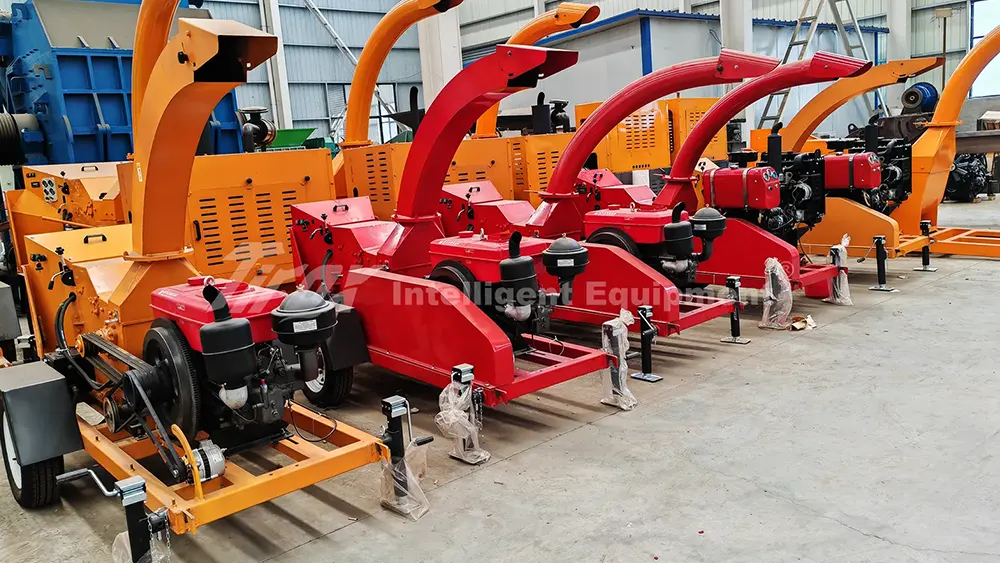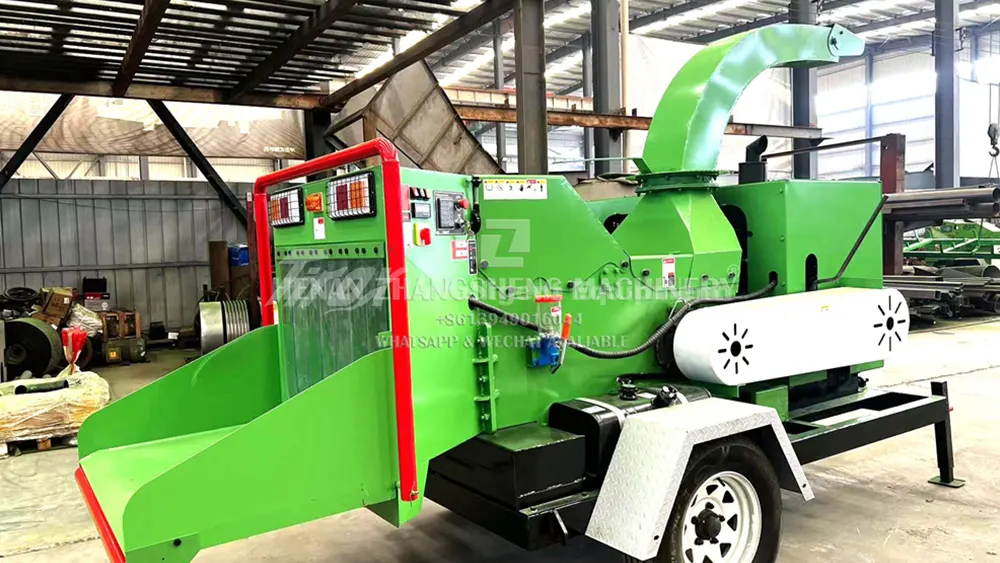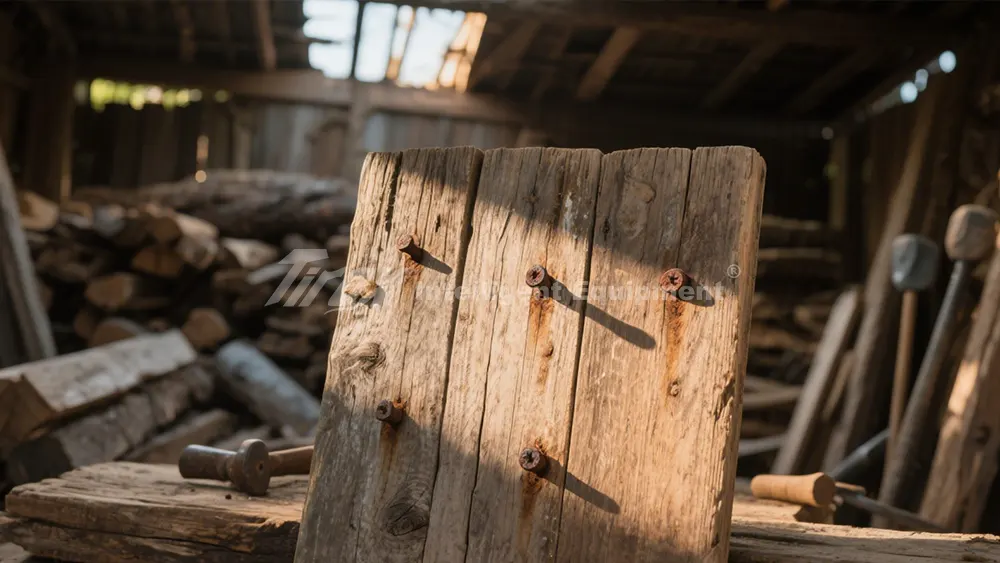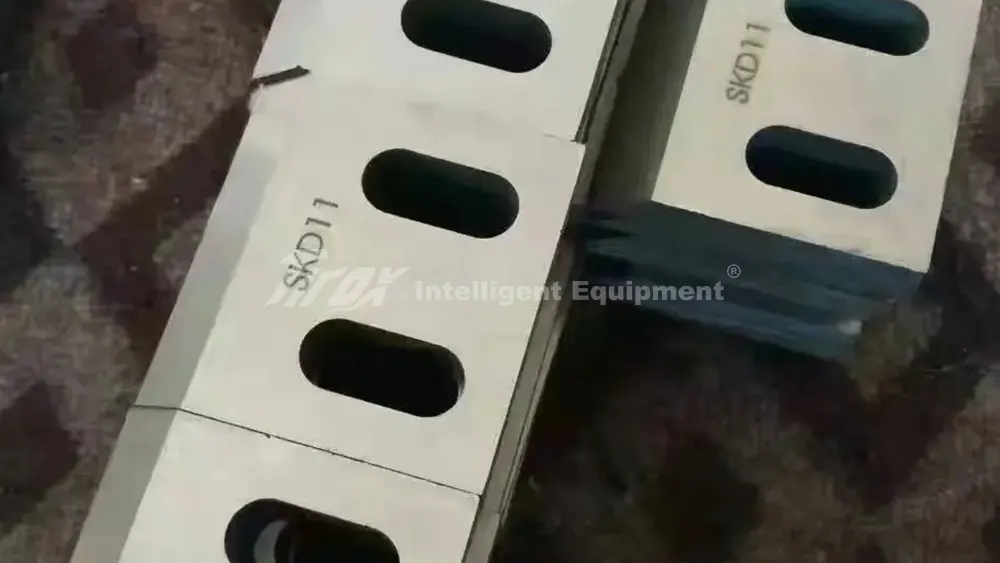Got a pile of recently cut branches or logs, still damp from rain or fresh sap? You might be wondering if your wood chipper can handle them just like dry wood. This is a very common question, and the answer isn’t always simple.
Yes, wood chippers can generally process wet wood. However, it’s often less efficient and puts more strain on the machine compared to chipping dry wood. Dry wood leads to cleaner chips, better performance, and a lower risk of clogging, but sometimes chipping wet wood is unavoidable.
Understanding how wet wood affects your chipper is really important. It’s not just about whether the machine can do it, but also about what happens when it does. Let’s explore what you should expect when chipping wet wood and how to best manage the process.
Does wood need to be dry before chipping?
Just finished cutting down a tree or trimming some overgrown bushes? You probably want to chip all that woody waste right away. But what if it rained last night, or the wood is very green and full of moisture? You might think you have to wait for it to dry out completely.
No, wood does not absolutely need to be bone dry before you chip it. But, chipping dry or seasoned wood is usually easier on your chipper. It also makes better quality chips and lowers the chances of your machine getting clogged. You can process wet wood, but you’ll need to be more careful.
Over my 22 years at TIROX, I’ve seen our machines tackle wood in all sorts of conditions. We build them tough. But there’s a noticeable difference when chipping dry wood versus wet wood. Think about cutting a dry stick compared to a green, wet one. The wet one feels denser and often bends more before it snaps. A wood chipper’s blades slice through wood fibers. When wood is wet, these fibers are full of water. This makes the wood heavier. It also makes it less brittle. So, instead of a clean slice, wet wood might tear or even feel a bit mushy to the blades. This means the chipper’s engine has to work harder. The blades also face more resistance. The chips that come out of wet wood are usually heavier and stickier too. This can cause them to clump up inside the discharge chute. If they don’t flow out smoothly, they can build up and cause a clog. Clogs stop your work and can stress the machine. So, while your chipper can handle wet wood, it’s not the best for top performance or for keeping your machine in great shape long-term. If you can choose, chipping drier wood is always better. It’s more efficient and gentler on your equipment. But sometimes, you just can’t wait for wood to dry. I remember one of our customers in a very rainy part of Southeast Asia. They almost always chipped green, wet wood because it rained so often. Their larger TIROX machine handled it, but they were very good about regular maintenance, especially keeping the blades sharp.

Dry Wood vs. Wet Wood Chipping Characteristics:
| Feature | Dry Wood | Wet Wood |
|---|---|---|
| Weight | Lighter, easier to handle | Heavier, more effort to feed |
| Fiber State | Brittle, allows clean cuts | Saturated, can tear or feel mushy |
| Engine Load | Lower, less strain | Higher, works engine harder |
| Chip Quality | Lighter, uniform, flows well | Heavier, stickier, potential clumping |
| Clogging Risk | Low | Higher, especially in discharge chute |
| Blade Wear | Slower | Can be faster (moisture, sap) |
So, you don’t have to wait until wood is perfectly dry. But chipping drier wood usually means a smoother job and less wear on your machine.
Can you shred wet branches by wood chipper?
A big storm just passed through, leaving you with a messy pile of wet, leafy branches. Your first thought might be to use your wood chipper to clean it all up. But can it really handle that kind of material effectively? This mix of wet wood and leaves can be surprisingly tough.
Yes, you can shred wet branches using a wood chipper. However, expect the process to be slower. You’ll also need to pay more attention to prevent clogs. Wet branches are heavier, and the leaves on them can easily contribute to blockages. The size and power of your chipper will make a big difference in how well it handles them.
From my experience building and exporting TIROX chippers, I know that wet branches, especially leafy ones, are a real test for any machine. A clean, dry branch usually zips right through. But a wet branch, loaded with wet leaves, is a different challenge. The water makes the branches heavier. This can make them harder to feed, particularly into smaller chippers that might rely more on gravity or have less powerful feed rollers. The main problem often comes from the wet leaves and small twigs. When they’re soaked, they tend to mat together. They don’t flow well through the chipper. Instead, they can clump up and stick to the inside of the chipper’s housing or, more commonly, the discharge chute. This is how clogs start. I’ve seen it many times; someone tries to feed a big bunch of wet, leafy branches too fast. The machine struggles, the engine note changes, and then it jams. More powerful industrial chippers, like some of the larger models we produce at TIROX, usually have stronger engines. They also have larger feed rollers with more aggressive teeth and bigger discharge openings. These features help them power through wetter, heavier, and more inconsistent material. The force of the feed rollers can help break up clumps of leaves. The bigger engine provides the extra grunt needed to cut through the dense, wet wood. The larger discharge chute reduces the chance of chips building up and blocking the exit. However, even with a powerful machine, you still need to feed wet branches more carefully than dry ones. It’s best to go slower. Don’t try to force too much material in at once. If you have a large pile of wet, leafy branches, try breaking it up into smaller, more manageable batches. If your chipper has an adjustable feed speed, setting it to a slower rate can help when processing wet branches. Always keep an eye on the discharge chute to make sure chips are flowing out freely. If you hear the engine bogging down or see the flow of chips slowing, stop feeding material for a moment and let the machine clear itself. Sometimes, feeding a dry, solid branch after a few wet, leafy ones can help push any sticky wet material through the system.

Factors Affecting Wet Branch Chipping:
| Factor | Impact on Chipping | Mitigation Strategy |
|---|---|---|
| Moisture Level | Branches are heavier, leaves stick more | Feed slower, ensure good airflow in discharge |
| Leaf Content | High leaf content leads to matting/clogs | Mix with woodier material if possible, feed less at once |
| Branch Diameter | Larger wet branches need more power | Match branch size to chipper capacity |
| Chipper Type | Smaller, less powerful units struggle | Use an appropriately sized and powered machine |
| Blade Condition | Dull blades will crush, not cut, wet wood | Keep blades sharp for efficient cutting |
Chipping wet branches is definitely doable. But it requires patience and careful operation to avoid problems. The capability of your specific chipper is a key factor in how well it will perform this task.
Can wood chipper work with wet wood?
We’ve talked about branches, but what about larger pieces of wet wood? Can a wood chipper actually work with substantial sections of a tree trunk or large limbs that are wet, either because they are freshly cut or have been soaked by rain? This is a critical question for many users.
Yes, a wood chipper is fundamentally designed to process wood, and this includes wood that is wet. The core cutting action will still function on wet material. However, processing wet wood demands more power from the machine, may result in slower throughput, and typically increases wear on components compared to chipping dry wood. The machine’s capability is a very important factor here.
When we design and build wood chippers at TIROX, we know they need to be robust enough to handle real-world conditions. And in the real world, wood isn’t always perfectly dry and seasoned. So, our chippers are engineered to cope with various situations, including processing wet wood. The basic cutting mechanism – sharp knives spinning at high speed and slicing against a fixed anvil or bed knife – still works on wet wood. However, the experience of chipping wet wood is different from chipping dry wood. When you feed a piece of wet wood into the chipper, it’s noticeably heavier. The machine’s infeed system, whether it’s gravity-fed or has hydraulic feed rollers, has to work harder to pull that heavy material in. Once inside the cutting chamber, the cutter drum or disc has to exert more force to slice through the water-saturated wood fibers. This puts a significantly higher load on the engine. You will likely hear the engine’s RPMs drop more when processing wet wood compared to dry wood of the same size and type. The chips produced from wet wood are also different. They are heavier and tend to be stickier. This affects how well they are expelled from the discharge chute. With dry chips, the airflow created by the spinning cutter disc or drum usually propels them out easily. With wet, heavy chips, they can clump together and build up, particularly in any bends or restrictions within the chute. This is a primary reason for clogs when chipping wet wood. Industrial and commercial-grade chippers, like many of our TIROX models, are generally built with stronger engines, more powerful feed systems, and often feature specially designed blowers or larger, smoother discharge chutes to better handle the output of wet, heavy chips. For instance, our Tracked Horizontal Grinders are built with systems that can power through large volumes of wet, bulky material, though even these very powerful machines perform at their absolute best with drier inputs. Smaller, residential-grade chippers with lower horsepower engines will naturally struggle much more with wet wood. They might feed very slowly, the engine might bog down easily, or they might clog frequently. Even the ambient temperature can play a role; very cold, wet wood might be even harder to process than warm, wet wood. Ultimately, while your chipper can work with wet wood, you must adjust your expectations and how you operate it. You will likely process less volume per hour. You’ll also need to be more watchful, monitoring the machine’s performance closely and checking for any signs of clogging. Keeping the blades sharp is especially crucial when dealing with wet wood, as sharp blades cut more efficiently and reduce the overall strain on the engine and other components. I’ve seen many of our export customers in regions with high rainfall who regularly use our chippers for processing wet wood. They understand the trade-offs: they might use a bit more fuel, and they might need to sharpen or replace blades more frequently, but the important thing for them is that the job gets done reliably.
Wet Wood Impact on Chipper Operation:
| Chipper Aspect | Effect of Wet Wood | Best Practice When Chipping Wet Wood |
|---|---|---|
| Engine Power | Higher demand, potential for engine bogging down | Don’t overload, listen to engine sound |
| Feed System | May struggle with heavy, sometimes slippery logs | Ensure positive feed, clear debris from infeed |
| Cutting Chamber | Increased load on blades, potential for buildup | Maintain sharp blades, check for clogs often |
| Discharge Chute | Higher risk of clogging due to heavy, sticky chips | Ensure a clear path, adjust deflector if needed |
| Overall Wear | Can accelerate wear on blades, bearings, belts | Adhere strictly to maintenance schedule |
In short, wood chippers can indeed work with wet wood. But it makes the job harder for the machine. Be prepared for slower processing, watch out for clogs, and take good care of your chipper by not pushing it beyond its reasonable limits when the wood is wet.
Conclusion
Wood chippers can process wet wood. However, dry wood is always better for machine efficiency, chip quality, and overall equipment health. Adjust your methods and expectations when chipping wet wood to avoid issues and keep your machine running well.







